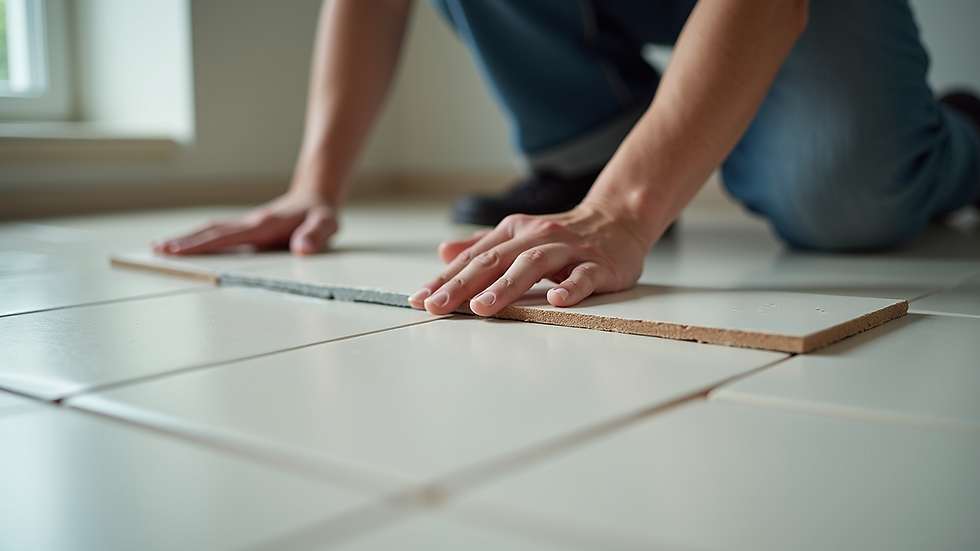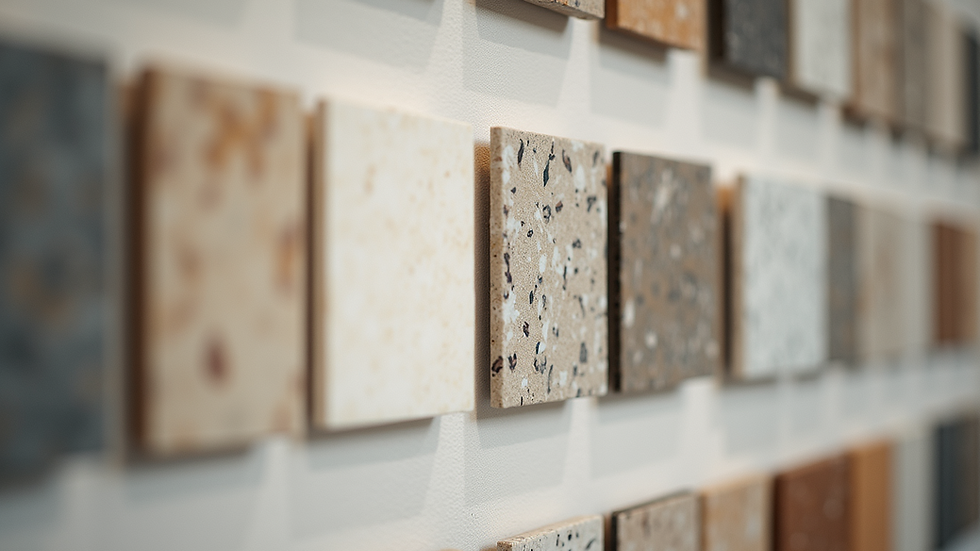Mastering Professional Tile Installation Techniques
- Sun Floor Installation

- Oct 13
- 4 min read
When it comes to transforming a space, few things add as much charm and durability as well-installed tile. Whether you’re refreshing a kitchen backsplash, upgrading a bathroom floor, or creating a stunning commercial entryway, mastering tile installation techniques can make all the difference. I’ve spent years learning the ins and outs of this craft, and I’m excited to share practical tips and insights that will help you achieve beautiful, lasting results.
Tile installation is both an art and a science. It requires patience, precision, and a steady hand. But with the right approach, even a beginner can create a polished look that rivals professional work. Let’s dive into the essential techniques that will elevate your tiling projects.
Essential Tile Installation Techniques for Success
Before you lay down your first tile, preparation is key. The foundation of any successful tile job is a clean, level surface. Uneven floors or walls can cause tiles to crack or pop loose over time. Start by thoroughly cleaning the area and repairing any cracks or holes. If you’re working on a floor, use a leveling compound to smooth out dips or bumps.
Next, plan your layout carefully. Measure the space and mark guidelines with a chalk line or laser level. This helps ensure your tiles are straight and evenly spaced. I always recommend dry-laying a few tiles to visualize the pattern and make adjustments before applying adhesive.
When it’s time to apply the mortar or thin-set, use a notched trowel to spread it evenly. The size of the notches depends on the tile size and type. For example, larger tiles require thicker mortar beds to support their weight. Press each tile firmly into place, twisting slightly to ensure good contact with the adhesive.
Don’t forget to use tile spacers to maintain consistent grout lines. This small step makes a big difference in the final appearance. After the tiles are set, allow the mortar to cure fully before grouting. Use a rubber float to press grout into the joints, wiping away excess with a damp sponge.

Understanding Different Tile Installation Techniques
There are several tile installation techniques, each suited to different styles and surfaces. Knowing which one to use can save time and improve durability.
Thin-set method: This is the most common technique, where a thin layer of mortar is spread on the surface before placing tiles. It works well for most ceramic and porcelain tiles on floors and walls.
Mastic adhesive: A pre-mixed glue ideal for small wall tiles and backsplashes. It’s easier to work with but less durable in wet areas.
Mud bed method: A traditional approach using a thick mortar bed to create a level surface. It’s perfect for uneven floors or large-format tiles.
Floating method: Tiles are installed over a plywood subfloor with a layer of mortar and a membrane to prevent cracking. This is common in wood-framed buildings.
Each technique has its pros and cons, so consider the project’s requirements carefully. For example, in wet areas like showers, thin-set with waterproof membranes is often the best choice.

What is the 3/4/5 Rule for Tiling?
One of the most helpful tricks in tile installation is the 3/4/5 rule, a simple method to ensure your layout is perfectly square. This rule comes from the Pythagorean theorem and is used to check right angles.
Here’s how it works:
Measure 3 units along one edge from the corner.
Measure 4 units along the adjacent edge.
Measure the diagonal between these two points.
If the diagonal measures exactly 5 units, your corner is a perfect right angle. If not, adjust your layout until it is.
This technique is especially useful when starting a tile job in a room that isn’t perfectly square. It helps prevent crooked lines and uneven grout joints, which can be very noticeable once the tiles are set.
Using the 3/4/5 rule early in your project saves time and frustration later. It’s a simple step that ensures your tile installation looks professional and polished.
Tips for Cutting and Fitting Tiles Perfectly
Cutting tiles can be intimidating, but with the right tools and techniques, it becomes manageable. A wet saw is the best tool for most tile cuts, providing clean, precise edges. For smaller cuts or irregular shapes, a tile nipper or angle grinder can be useful.
When measuring for cuts, always double-check your dimensions. Mark the tile clearly with a pencil or marker before cutting. Take your time and wear safety glasses to protect your eyes from dust and shards.
For tricky areas like corners or around fixtures, consider making a cardboard template first. This allows you to test the fit without risking a tile. Once you’re confident, transfer the template measurements to the tile.
Remember, it’s better to cut slightly larger and trim down than to cut too small. Tiles that are too small can leave gaps and weaken the overall installation.

Maintaining Your Tile Installation for Longevity
After all your hard work, maintaining your tile installation is essential to keep it looking fresh and lasting for years. Regular cleaning with a mild detergent and warm water prevents dirt buildup and grout discoloration.
Avoid harsh chemicals or abrasive tools that can damage the tile surface or grout. For grout lines, consider sealing them every year or two to protect against stains and moisture.
If you notice any loose or cracked tiles, address them promptly. Small repairs are easier and less costly than replacing large sections later.
By following these maintenance tips, your tile installation will continue to shine and serve your space beautifully.
Bringing It All Together with Expert Craftsmanship
Mastering tile installation techniques is a rewarding journey. With patience, practice, and attention to detail, you can create stunning floors and walls that enhance any room. If you want to ensure the highest quality and durability, consider consulting with professionals who specialize in this craft.
For those seeking reliable, expert help, professional tile installation services can provide peace of mind and exceptional results. Their experience and skill make all the difference in achieving a flawless finish.
Remember, every tile you lay is a step toward transforming your space into something truly special. Embrace the process, and enjoy the beauty that well-installed tile brings to your home or business.




Comments